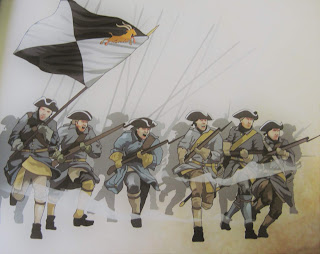With Talon and Claw is Mr Barry Hilton’s Great Northern War (GNW) supplement for use with the War of Three Kings. As you would expect from the League of Augsburg stable the production values are first rate. Like the War of Three Kings it’s a sturdy hardback book.
The aim of the book is to provide all of the all the information necessary to game the Great Northern War and it succeeds admirably. The War of Three Kings already provides for Russians and Swedes, indeed if you hit the GNW tag I’ve written a blog on just that topic. There is some new stuff for both Russians and Swedes in this latest volume.
Mr Hilton’s main challenge was to accommodate the very different military system of the East (which in this period begins in Poland) within the confines of the primarily Williamite War based War of Three Kings. He does so by use of special rules, pretty much as special rules were needed to cater for the Highland Charge. I’ve yet to try the new additional rules out on the table top but reading them I think all should run smoothly enough. In short, nothing seems obtrusive rather the parameters of the rule set are seamlessly expanded to take in a new theatre. No mean achievement in my view.
As well as the new rules you get a primer chapter on each
of the major combatants dealing with activity, tactical doctrine, troop and
command quality.
This is followed by heavily illustrated uniform and flag sections for each of the combatants.
I should add the Cretan War between the Ottomans and Venetian Republic is included.
This is followed by heavily illustrated uniform and flag sections for each of the combatants.
I should add the Cretan War between the Ottomans and Venetian Republic is included.
The final part of the book is given over to a Russian
versus Swede After Action Report (AAR) to show us how the rules work. It does this
very well and the text and photos are inspiring. I like a game to capture the uncertainty of
war and to tell a good story. On the evidence of the AAR With Talon
and Claw delivers both very well.
This book was written with War of Three Kings rules in mind yet the information within could serve well in any modular rule set say, Black Powder or Piquet. The technical information, uniform and flag details will gratify anyone interested in the period.
This book was written with War of Three Kings rules in mind yet the information within could serve well in any modular rule set say, Black Powder or Piquet. The technical information, uniform and flag details will gratify anyone interested in the period.


























